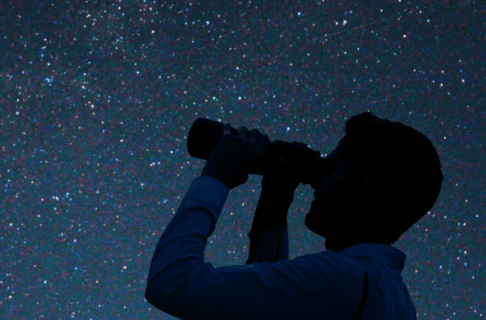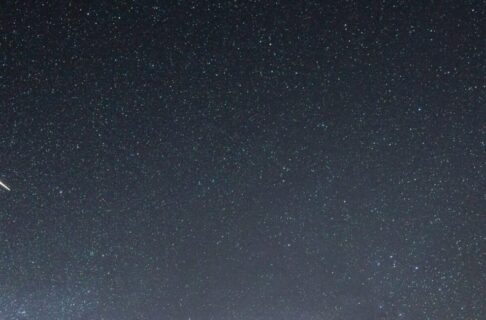Posted on: Wednesday August 12, 2015
Every August, our planet passes through a giant dust bunny in space. The dust comes from Comet Swift-Tuttle, a “dirty snowball” that orbits the sun in an oval path. The comet itself is not terribly impressive, but it leaves so much dust in our Earth’s path that the Earth spends several days sweeping up millions of dust particles like a planetary broom. Each piece of dust hits the earth’s atmosphere at incredible speeds, and friction with the air causes the dust to vaporize in a flash of light at altitudes of dozens of kilometers. All the way down here on the ground, we can see each speck of dust’s death throes as a “falling star” or “shooting star”. Astronomers prefer the correct term: “meteor”.
There are actually meteors hitting Earth all the time. On any clear night, if you watch the sky carefully you’ll see a few. Under perfect dark conditions, you can expect 5-10 meteors per hour on just about any night, caused by the random dust particles floating around the solar system. In August, though, Earth hits that dust bunny, and we see many more meteors – a meteor shower. Despite the name, the sky doesn’t fill with shooting stars; you may see one every minute or two, though.
The Perseids are just one of a dozen or more annual meteor showers which are visible. Named for the constellation of Perseus, where they appear to radiate from, the Perseids are the best-known meteor shower because they occur in August, when sitting outside all night in a field is survivable. If you want to get technical, the Geminids of December are a better event, but Manitobans certainly recognize the challenges involved in observing them without losing fingers and toes to frostbite.
Observing the Perseids: Meteor showers are the ultimate low-tech observing event. You don’t need a telescope or even binoculars; your main piece of gear is a reclining lawn chair or blanket. You want to get away from city lights if you can – street lights will make it harder to see the fainter meteors, and really cut down on the number you see. Face the darkest part of the sky, and just look up and watch the stars. Every so often, you will see a meteor streak by.
The shower is active now, but it’s a slow build-up. The peak is on the early morning of August 13th, but you should see meteors for several days before and after that. Meteor showers like the Perseids are always best after midnight – you might not see many in the evening hours. This year, the moon is New on the 14th, and so won’t drown out the meteors with its light.





